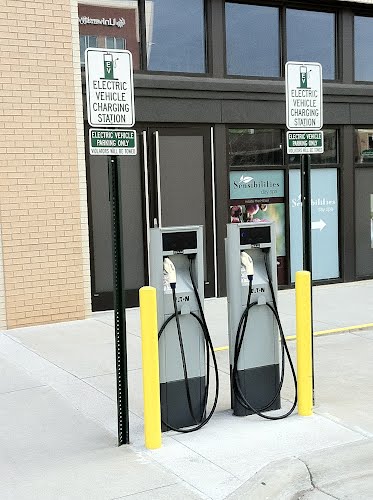Over the last few weeks, there have been several reported instances from all over the USA of a minority of pickup truck owners intentionally blocking Tesla Supercharger stations (aka Electric Vehicle Supply Equipment (EVSE)/Electric Vehicle charging stations. This relatively small number of incidents has generated much attention on various social media outlets and from EV owners groups/clubs and other automotive-focused news outlets and on YouTube.
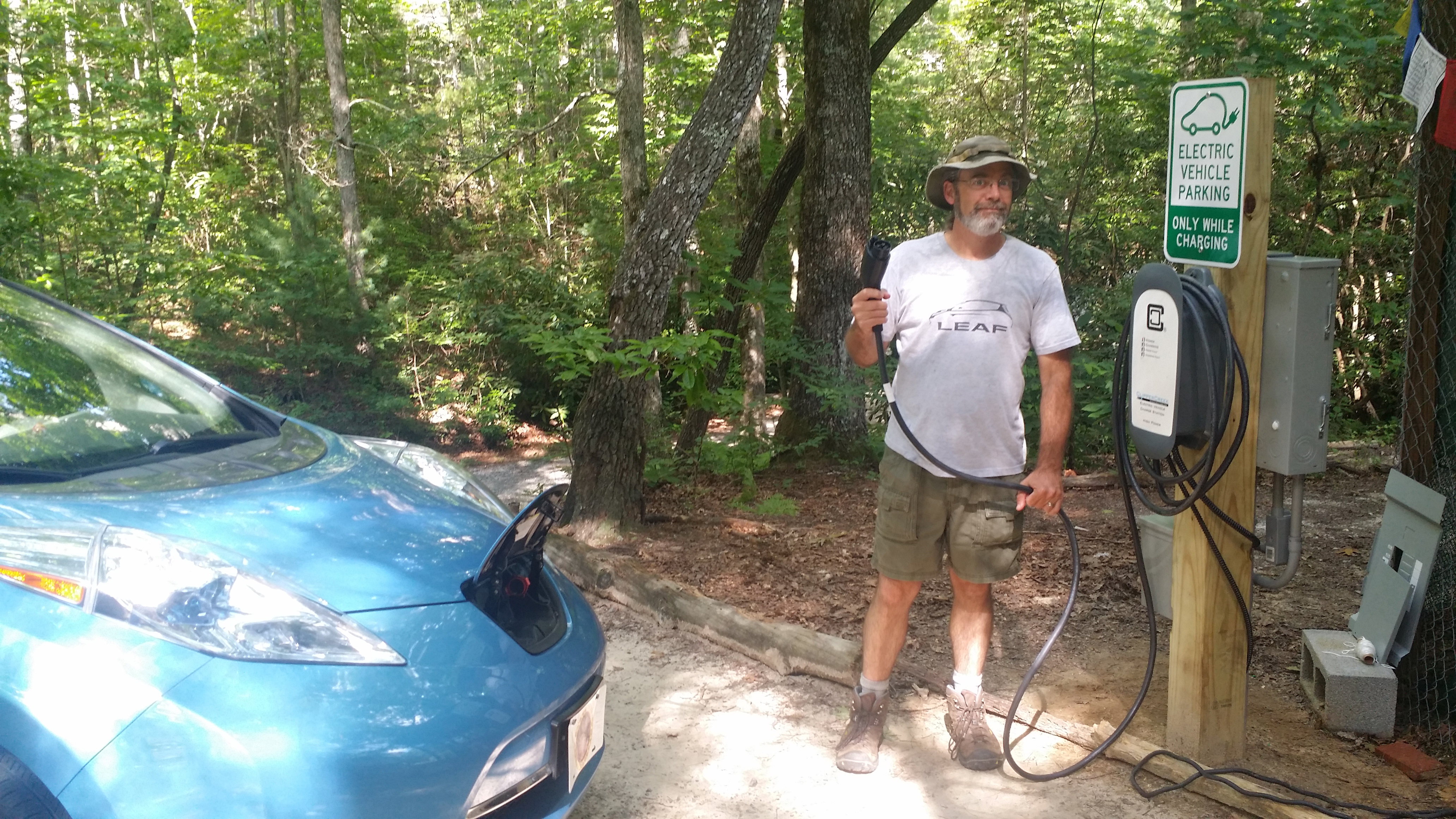
At first, I was hesitant to write anything about any of these instances because, in a way, writing about them is drawing attention to the small number of individuals who commit these crimes. However, I decided that – as a previous truck, 4WD, and current sport-utility vehicle and EV owner – it is my obligation to report on these thoughtless incidents and put these narrow-minded knuckle-dragging dunderheads in their places with the facts before they destroy the reputations of respectable pickup truck owners everywhere.
The Problem
For background I will share a few of these incidents below;
This is the first high profile incident that gathered nation-wide media attention – and from my home state no less.
Tesla Supercharger gets taken over by anti-Tesla pickup truck drivers acting aggressively
Then this one…

More non-random acts of stupidity.

Really people?

…even more madness…

…and this…
From the I’ve Been ICED twitter account.

The revealing thing is that the entire parking lot was practically empty…

It seems obvious to me this was an intentional act directed at Tesla and/or EV’s in general. The other obvious thing is the driver of the truck either did not care or was possibly not aware they were openly advertising who they were with the conspicuous company magnetic sign on the truck door – what a great invitation by EV owners (and others) to report their team member’s thoughtless EV charger blocking action to the company…oh and what a great reason to NEVER use the services of that company in any way. Good work Navarro & Wright, what a great way to make a name for yourself…

In another thread on Twitter, Nascar driver and Tesla owner Leilani Munter garnered some notice when Elon Musk and many others spoke up about this issue;
@LeilaniMunter careful charging in Hickory. The ignorant people are aware of us https://t.co/pqgc3uLsLY— Mike Hoffman (@McHoffa) December 23, 2018
This is scary. I’ve been coal-rolled in my Tesla by several trucks in NC, the drivers were hostile. If you don’t know what it is google “Stephen Colbert Coal Rolling.” One day these conflicts will end very badly. @Tesla @hickorypd @StephenAtHome @cleanairNC @cleanenergyorg @CMPD https://t.co/Gd6S6SOhNB— Leilani Münter (@LeilaniMunter) December 23, 2018
Yet another good example of what not to do.

Recently from not far from my home a Hummer driver intentionally blocks two Tesla Superchargers as a “prank” – what a total wanker.

From this blogger’s point of view these actions do not appear to be accidents since the Tesla Supercharger stations are;
1 – Very visible being lit up with red lights on a white background.
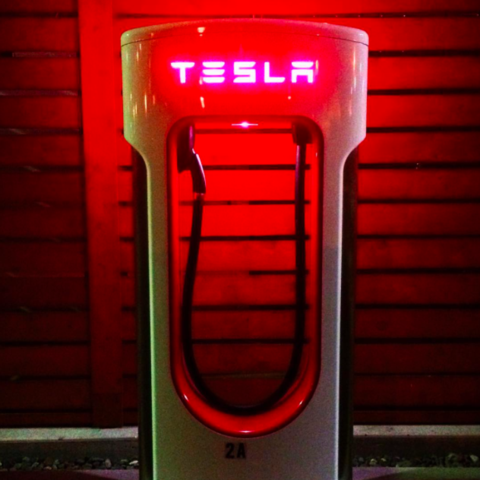
2 – Well marked as TESLA charging stations…not Ford, not Chevrolet, not Dodge, not Toyota, not Jeep – but Tesla.
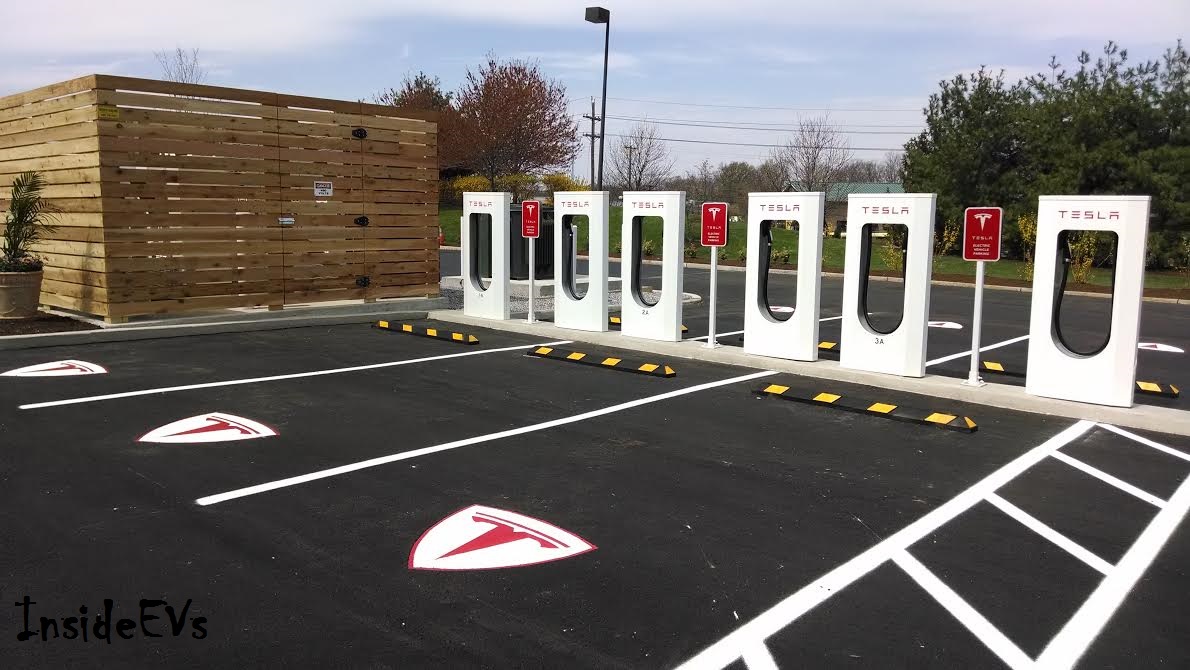

3 – Tesla EVSE stations are most often located in remote parts of the parking areas so as not to take up available parking spots for all other vehicles near the entrances of the nearby establishments where they are found.


In other words – in order for you to block a Tesla Supercharger charging station with your vehicle you would need to either;
1. Drive a Tesla and know where the station is because you have been there before – or you have used your Tesla’s navigation system to guide you to it for a charge.
or
2. You do not own a Tesla and have made a premeditated decision to locate the Supercharger station for the purpose of blocking it with your non-electric vehicle for whatever bizarre load of jollies that action would give you and/or your childish comrades.
or
3. You are a new Tesla owner/driver/borrower/renter who is unfamiliar with Tesla/EV charging etiquette and are unaware that after the car finishes charging you should kindly move it to a nearby standard parking space so the next person will have access to the charging infrastructure.
or
4. You are a Tesla owner on the bleeding edge of the lunatic fringe of Tesla/EV ownership. Perhaps you feel that – because you have the means to own a Tesla, that you are somehow above/better than everyone around and you now have the right to park your car in the charging space for as long as you like. If this is your reasoning – then you, my friend, are an entitled little bully and are no better than those who block charging access with their garish toy trucks. In my experience this type of Tesla/EV owner is rare, yet I have heard reports that they do exist.
So, aside from the occasional parking accident by the un-observant or uneducated – there is no real reason and no real excuse for parking a non-Tesla vehicle in a Tesla or any other electric vehicle charging station.
Misunderstandings Do Happen
As stated earlier, sometimes EV owners who are new to the world of EV’s and have not learned the appropriate EV charging etiquette might mistakenly leave their EV parked in an EV charging space for much longer than needed after the car’s charge is complete – I did this a few times early on in EV ownership and quickly learned my lesson. Most of these infractions are innocent mistakes that can easily be remedied with gentle education of the new EV driver either with a few words or an informational card/flyer left for when the driver returns.
However, some entitled EV drivers seem to be treating EV spaces as a pass to free parking, not at all caring about the other EV drivers who need to stop and fill up their “electron tanks” so they can get on down the road. In the following photo, we see a Tesla parked and not charging in an EV only charging space – how rude.
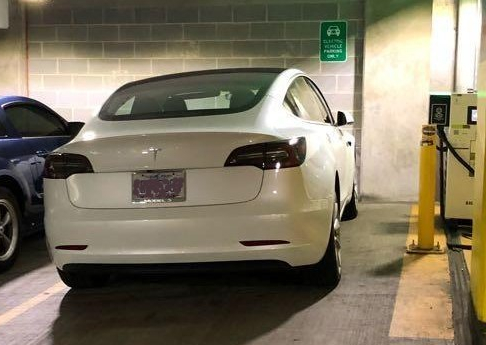
This is the same as filling up your gas tank, hanging up the gasoline nozzle, and walking off leaving your vehicle blocking the pump.
I have observed this practice on several occasions and when I do I always leave a nice note in the hopes of educating the parking perpetrator on the errors of their ways. In the above case, part of the error may be in the wording of the signage on the wall beyond the Tesla and it reads – “Electric Vehicle Parking Only.” This wordage may give some EV newbies the idea that they are able to park their EV here even when it is not charging. That is just not the case. and is bad planning on those who chose the signs for this site. Luckily, many charging stations now have signs that read “EV Parking only while charging.” Along with this fact many EVSE units will continue to charge you money if your car remains plugged in after the charging session has ended as an expensive reminder to be courteous and move your car so the next person will be able to charge.
Most EV’s and EVSE come standard with internet connectivity. This allows them to be easily configured to send a text to your mobile device when your vehicle has finished charging, therefore, you have no excuse not to move your car thereby opening the space up for the next EV needing a charge.
Bad Parking Planning
On several occasions, I have encountered non-EV’s blocking charging stations – most frequently (in my experience) at this downtown EV charge point supplemented with solar power.


While these non-EV vehicles are directly blocking one of the chargers, at least they are following the directions printed on the pavement and signs that state “EV Only.” In reality, this type of EVSE blocking will not limit the ability to charge an EV since the power leads are usually long enough to reach an EV parked in the EV only spaces nearby. However, the limiting factor here would be available parking. There are three EV chargers and only two marked EV parking spaces so only 2 EV’s would be able to charge when ICE vehicles are parked in the non-EV marked parking spaces. It seems that common sense would dictate that if you install an EVSE for EV’s, then the number of charge points and parking spaces should be equal.
How some Tesla owners may choose to handle EVSE blocking situations – but it is not at all recommended by this blogger…unless there is no other option I suppose.
Obviously, Teslas do have more than enough power and torque to handle any situation.
Another fun option for Tesla owners to get rid of EVSE blockers – this one is in Chinese but no translation is needed 🙂 Follow the link to view the video
https://twitter.com/ShanghaiJayin/status/1107320205326192640
______________________________________
The Question
So, what do I, as a previous truck/SUV owner and current Electric Vehicle owner and driver of over 5 years, what do I think of this recent practice of some truck owners intentionally blocking Tesla Superchargers with their pickup trucks?
Before I get into my answer I must first note that it is in my humble opinion, based on over 35 years of driving and many more years of life experience, that the perpetrators of these thoughtless acts are a very small percentage of overall truck owners.
So let’s call them the: lunatic fringe.
The vast majority of pickup truck owners I know and have met are good, respectable people that own and drive pickup trucks because they serve a utilitarian purpose in their lives – you know, hauling stuff, pulling stuff, doing work, and having fun outdoors.
These good, respectable truck owners would never intentionally block access to another person’s fuel source and would never think to use their vehicle as a bullying tool/weapon in the attempt to make some sort of misguided personal, political, or anti-environment statement. They just drive their trucks and use their trucks – and that’s it.
I say this because not only is it common sense and fully supported by evidence – but I also have a bit of experience in this area. In my over 35 years of driving, I have owned, driven, and used the following vehicles:
My first truck – a 1978 Chevrolet C-10 step side.
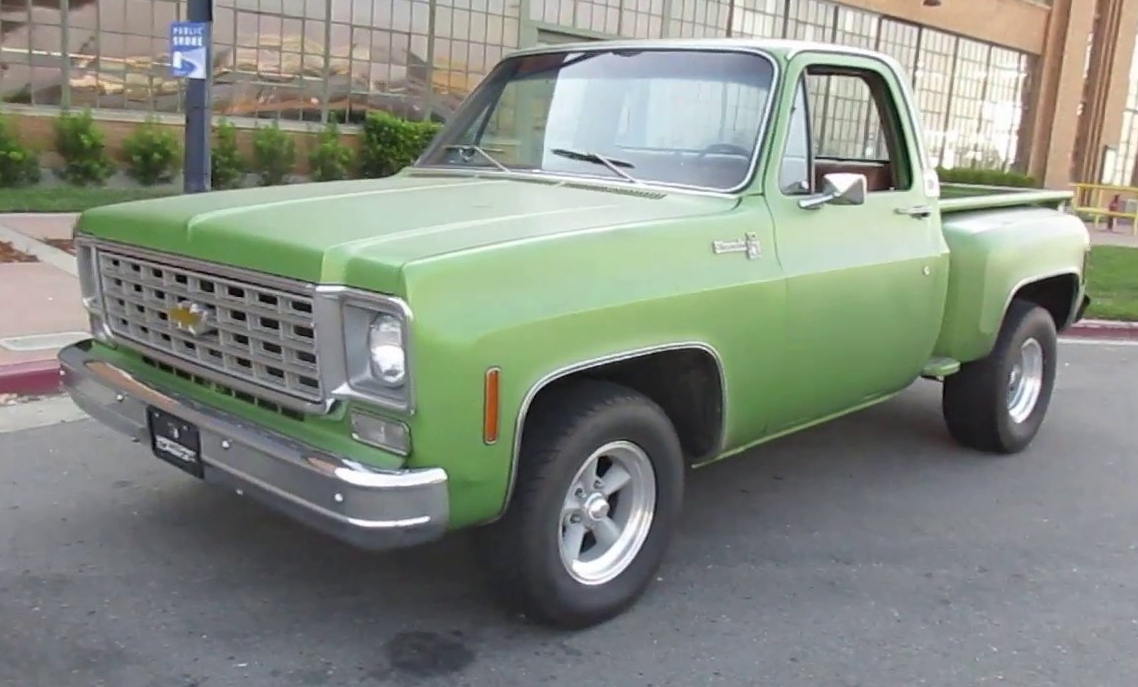
My first 4WD vehicle – a 1965 Land Rover Series 2a 88″ – before the restoration.

After I personally restored it.

On the trail with friends.


It was a wonderful 4×4, and my favorite, that I drove daily and used for the purpose it was intended – an all-terrain, go anywhere utility vehicle – truly the world’s best 4x4xfar (that may change when Bollinger Motors starts selling their game-changing B1 and B2 SUT’s to eagerly awaiting truck-o-philes everywhere 🙂

I sold my first Land Rover as it was just too nice to drive on a daily basis and then purchased a very well used 1966 Land Rover Series 2a 109″ ExMoD Field Ambulance. I modified this classic old aluminum workhorse into an overland camper and drove it for several years as my daily driver and on many on and off road-trip adventures, wildlife study and conservation expeditions. When gas prices started to climb I was forced to sell it to continue paying for my college education…

…then came the 1987 Suzuki Samurai – a wonderful little 4×4 that took me into remote areas for my wildlife conservation work and more.

It was a great little 4×4 that served me well for almost a decade. It was my daily driver, my wildlife study and conservation vehicle, and my firewood acquisition vehicle making use of the custom winch and bumper to often pull trees weighing more than the vehicle out of the woods for later processing into firewood.
And it was fun, fuel efficient, and reliable off-road…but after over 250,000 miles it began to show serious signs of age so it found a new home and along came…

…a 1999 Toyota 4Runner – a great 4×4 that served me well.

And finally, my most recent 4WD is a 2013 Honda Pilot SUV (random internet photo) that we use for hauling the family around and hauling/pulling loads.

As you can see I love the utility of trucks and 4WD vehicles and I would love to have another one day to make my life and my job easier and more productive. As soon as the all-electric trucks, vans, and 4WD’s hit the market – I will be driving one daily as my company/commuting and utility/wildlife conservation outreach vehicle – and that day is approaching faster than you may think.
Back to the Question
With all that out of the way, let’s get back to the original question:
What do I, a seasoned truck/4×4 owner, driver and aficionado of many years AND an Electric Vehicle driver of almost 6 years think of the recent practice of some pickup truck owners intentionally blocking Tesla Supercharging stations?

I could relate to you how unbelievably childish, small-minded, knuckle-dragging, infantile, non-sensical and stupid it is while tossing out many colorful metaphors, however, I will refrain from that level of thinking and offer my answer in the form of the following thought experiment:
What would YOU do, as a gas/diesel vehicle driver looking to fill up your vehicle’s fuel tank with refined hydrocarbons, if you arrived at your filling station of choice only to find an EV driver intentionally blocking your gas/diesel fuel pump with their electric vehicle?
Hopefully, you would think the same way I would: either they had made a mistake or…they may be potentially unstable and may even be dangerous – especially if they insulted and taunted you with vulgar language and gestures as some of the perpetrators are being reported to have done.
Why would you think these things?
The common sense answer:
The evidence is blocking the fuel pump.
Due to the obvious fact that the owner of the pump blocking vehicle is driving a vehicle that does not ever need access to the fuel source it is blocking, then evidence and common sense would dictate the following:
1: They may have blocked the pump accidentally. After they have been respectfully informed of their error, they should not hesitate to move their vehicle to the correct nearby charging point. However, being an EV driver I would highly doubt that this would be the usual scenario as EV drivers do not often make the mistake of blocking petroleum-based fuel pumps if the vehicle they are driving is theirs and if they are at all familiar with it.
(If you are driving a vehicle of any kind you had better take some time to read the instructions and become familiar with it – all the more so if it is a state of the art high-speed low drag Tesla aka: Intergalactic SpaceBoat of Light and Wonder or any other EV.)
Similarly, the vast majority of respectable gas/diesel vehicle drivers would never think to intentionally park their vehicles in front of EVSE stations and/or intentionally vandalize EVSE units and/or intentionally taunt/insult drivers whose vehicles operate on fuels other than gas/diesel…until recently that is…
2: They may have committed this pump blocking act intentionally. Furthermore, if they were taunting/insulting you or your vehicle/fuel of choice with rude and/or hateful colorful metaphors, it would be even more evidence that their actions were not accidental and they might not be entirely stable individuals – you know, those on the lunatic fringe.
How should you respond?
The safe approach would be to er on the side of caution and be very wary of their actions because no thinking, rational person with even a gram of common sense and decency would ever commit such a blatant act of intentional bullying unless they had an over-sized, unstable, reactionary chip on their shoulder and/or were intentionally looking for a dangerous confrontation.
Suggestion: before you take matters into your own hands in regards to option 2 you should be absolutely sure the situation was not an accident by a person unfamiliar with driving an electric vehicle – possibly something like in the video below where the driver may have borrowed the car from a friend and/or the owner of the car was playing a joke on them.
Once you rule out an accidental parking maneuver, the next step would be to report the thoughtless, possibly intentional fuel pump blocking action to the nearest authorities, step back to a safe location, and wait for the police/tow truck(s) to arrive to remove the disruptive perpetrator(s) – be they an EV blocking a gas, diesel pump or an ICE vehicle blocking an electric fuel pump.
ICEing
Those of us that drive plug-in electric vehicles refer to the act of accidentally or intentionally blocking charging stations with Internal Combustion Engine powered vehicles – “ICEing” or being “ICEd.”
For clarity: ICE = Internal Combustion Engine
Most of the time, when an ICE driver blocks an EV charging station it is an honest mistake made by someone either in a hurry or simply not being observant enough to see all the signs denoting the space as EV use only.
These innocent people should be excused from their mistake and politely educated either in person if possible, or if they are not available, with an informational flyer placed under the windshield wiper – many EV drivers carry these for events such as these.
As an EV driver I encounter ICED EVSE stations frequently – in a recent incident, I was sitting in my EV while it was plugged into a Level 2 EVSE and charging during a heavy rain shower. As I sat there in the rain reading a book and charging up the LEAF I watched as an ICE driver pulled hastily into the parking space opposite mine, jumped out, and ran off into the rain. It seemed to me that the driver had absolutely no idea that he had parked in an EV charging location. He was in a hurry, whipped into an open space failing to notice the signs, the two EVSE units…and the EV parked and charging 10 feet away.

In another recent incident I stopped in a local parking garage to plug in my EV only to find both charging spaces ICED…despite the fact that there were several empty parking spaces in the garage…

…and despite the signs and EVSE (charging station) on the wall in front of them – there they sat blocking access to the charging stations and neither of these vehicles were plug-in electric vehicles. I left respectful notes on their windshields and then later encountered the owner of the Prius. She was very nice and seemed totally unaware of her mistake. Hopefully in the future she will be more observant and leave the EV spaces for the EV’s (If you want to get technical: it’s not like there is a shortage of non-EV parking spaces, it is the other way around – there are plenty of standard parking spaces with EV charging locations remaining in the minority – which means blocking them creates an even bigger negative impact – so please, use some common sense here and just don’t do it.)
I believe what happens in many ICEing events is that many ICE drivers are just not very observant of anything outside of their comfortable, daily frame of reference. They are unfamiliar with EV’s and they do not use the EVSE charging network so they do not see the signs and the equipment – they just find an open slot, park their car and run. Maybe someone needs to come up with an ICE vehicle detector that, when deployed in EV charging spots, will detect the hydrocarbon-based fuels/lubricants/exhaust gasses used in/produced by ICE vehicles and, when detected, trigger highly noticeable strobe lights and illuminated signage indicating to the ICE vehicle driver their mistake. If their mistake is not rectified, the system would automatically either: identify their vehicle sending them a pricey ticket and/or notify parking authorities so they can move the blocking vehicle, and in repeat offenders/intentional blockers – place a wheel lock on the vehicle and have it impounded.
This past winter I encountered yet another form of ICEing…with real ice.

The evidence suggested that the snow removal crew chose to pile up the snow in both of the marked EV charging spaces. This is as irresponsible as blocking the spaces with an ICE vehicle especially since there was ample space nearby on the grass surrounding the parking area to pile the snow where ALL drivers – no matter the fuel that powers their vehicles – would then have access to parking. Yes, it may have been an accident, but due to the perfect blocking of the only two EV charging spaces in the parking area – I cannot help but wonder if the individual(s) that did this did it on purpose possibly as some sort of statement against EV’s, their charging infrastructure and/or the people that drive them. Hmmm, I wonder if these snow pushers also block “handicap” spaces with huge piles of snow…
Accidental ICEing aside, the thoughtless act of intentionally blocking electric vehicle charging stations with ICE vehicles (or blocking gas pumps with EV’s for that matter) should never be excused and should always be reported to the authorities as soon as possible in the attempt to stop the madness before it gets out of hand.
Speaking of intentional ICEing, I would like to share a couple of unusual examples with you. The first one is an absolutely bizarre case. Apparently the owner of this highly modified and obviously entirely powered by fossil fuels “street-rod” – complete with huge engine, visible gasoline tank, and dual exhaust pipes – has attached a fake J-1772 charge connector to the side of his vehicle to try and gain access to electric vehicle charging locations.

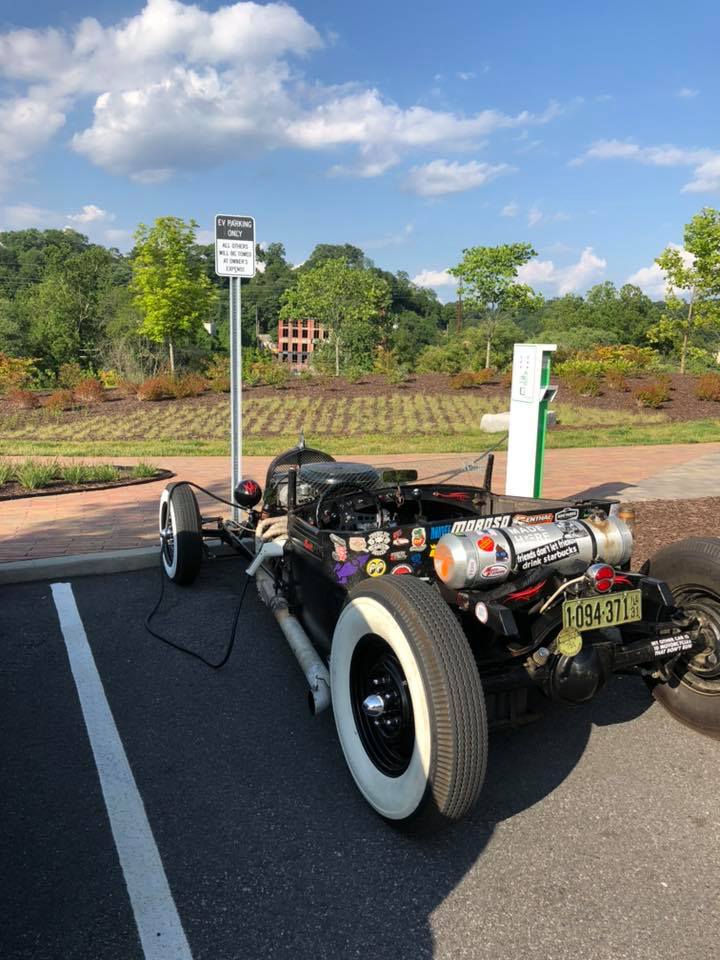
Does he actually believe this ludicrous tactic will work? It is no different that if I parked in a handicapped parking space, hung a fake handicapped tag from my rear view mirror, hopped in a wheelchair and rolled off thinking I was somehow the smart one…riiiiight.
Then recently another “ICEhole” has been intentionally blocking a local EVSE and leaving threatening notes to EV drivers as seen in the below photos.

In the first photo he is parked in a spot where ICE vehicles may park – but only if the rest of the parking lot is full as the below sign reads…

…and it hardly ever is…

…so it is obvious to everyone that he is parking in this location intentionally as an instigator/bully. Another problem I have with this image is how far over he parked into the EV only space to his left. It seems as if he parked this far over on purpose with the intention to instigate a response from the EV owners that use the charging station on a regular basis.

The sign in the adjacent parking space reads as follows:

The true revelation of his intentions came in the form of a venomously worded, hand written letter stuck on the inside of his windshield…

It is obvious that the owner of this vehicle has intentionally ICED this EVSE space even when there are several open parking spaces in the parking lot where the EVSE is located. Why? What are his motives? A few weeks later the Jeep owner even went so far as to again park in the same space and affix another childish sign to his vehicle…

While he would be legally parked if the entire parking lot were full and the space he has chosen to park in was the only one available – that is not the case as there were several open spaces in the remainder of the lot. It seems that Mr. Ledford has intentionally chosen to park his vehicle in this spot in the attempt to instigate a response from EV/PHEV owners. Evidence suggests that he is a bully pure and simple and is looking for a confrontation.
In this type of situation the best action is to report the parking perpetrator to the authorities. However, before reporting the perp, it is probably a good idea to attempt to covertly get a photograph(s) of his/her vehicle and its license plate and the perp’s themselves if possible so you will have evidence to hand over to the authorities. In my opinion, it is not ever a good idea to confront these types of people as they are often aggressive and volatile and may even be intoxicated and/or have dangerous or deadly weapons in their vehicles or on their persons and may even retaliate later with childishly destructive tactics that small-minded bullies often exhibit.
IMHO the best bet in these situations is to just step back to a safe place and watch the action happen when the police, tow trucks, and news crews arrive.
EVSE Vandalism Issues
Intentional EVSE blocking is not the only issue. Most recently a Tesla Supercharger in Utah was vandalized when some lowlife intentionally tried to drill out the charge connector and cut the charging cable – WTF, really people? How would you like it if I intentionally tried to cut your gas/diesel hose or intentionally vandalized the fuel pump handle that you needed to fuel your vehicle? Grow up people – or crawl back under your rock and stay there.
Source: https://www.teslarati.com/tesla-supercharger-attack-vandalism-drilled-charging-plugs-cut-cables/
I have encountered EVSE vandalism on a few occasions in my area. This is one of the most recent – a quick charger’s screen was damaged by an unknown assailant. The crack pattern of the glass suggests a blow from what may have been a hard object such as possibly a rock or hammer or maybe even a fist. The height of the screen from the ground and distance from the parking space places the EVSE’s screen too far out of range for this to be an unfortunate parking accident. This suggests to me that this may have been a deliberate act of vandalism.

Help is on the horizon. Tesla vehicles now come equipped with “Sentry Mode*” that uses many of the vehicle’s external/internal cameras to record all goings on in the vicinity of the vehicle. I am sure this feature will be very useful in capturing many perpetrators in action be they EVSE blocking lunatic fringe pickup truck drivers, would be thieves, or vandals with a misplaced score to settle with an inanimate object and the progress it represents. *Read more about sentry mode: https://cleantechnica.com/2019/02/14/sentry-mode-keeps-watch-over-your-tesla-while-it-is-parked/?fbclid=IwAR2QlxVG6ggeQuqotvx88D-tHBwtSm1Mtjhx0kPkA3z3tnrDDvAQYdkhYEQ
The Law
It is unlawful to block an EVSE charging station in at least 8 States and many more cities/towns. For the details visit: https://pluginsites.org/plug-in-vehicle-parking-legislation-reference/
In many of these places, those ICE drivers who block an EVSE will receive a hefty fine. Raleigh, NC is a great example where EVSE ICEr’s are fined $50 for blocking a charge point – thank you Raleigh! In my opinion, this should be the rule everywhere and any fines collected could be used to improve roads and infrastructure for everyone no matter what they choose to drive.
Source: https://insideevs.com/one-charging-spot-generated-27000-fines-ice-drivers/
And now, from one of my favorite YouTube personalities, Robert Llewellyn of Fully Charged Show , comes this great video illustrating that the phenomenon of ICEing EVSE stations is not just a quandary in the States…
Hmmmmm….all this EV charging station blocking makes me wonder if – way back in the early days of the internal combustion engine – did some horse and wagon owners who felt threatened by the gas-powered future, seek out and block fuel pumps?


I seriously doubt it because I am pretty sure they had something called common sense and morals so they did not waste there time on creating more needless drama.
A bit of a tangent for a bit of a comparison.
Blocking EV charging points is similar to the uncaring, malignant practice that some call “coal rolling.” This is a practice where some truck owners – a very small percentage overall and yet another lunatic fringe group – illegally modify their diesel pickup trucks to – on-demand – emit clouds of black diesel smoke through over-sized exhaust pipes.

These “coal rollers” then often use their illegally modified vehicles to intentionally target pedestrians, police officers, bicyclists, runners, groups of people on the sidewalk, and people who drive hybrid and electric vehicles. They intentionally align their vehicle’s often grossly over-sized exhaust orifice in the direction of their target and flip the switch vomiting copious amounts of dirty, toxic, diesel smoke all over their innocent targets. If you are interested in seeing evidence of this stupidity – just input “coal rolling” or “rolling coal” into a YouTube/Google search and you will find the video evidence shared by the polluting perpetrators…and you will also find some great memes revealing just how ridiculous the act of coal rolling truly is, such as this one.

What is a Darwin Award?
For whatever bizarre, childish, testosterone soaked, insecurity driven reasons, this small number of fringe dwelling truck drivers seem to be proud of their illegal atmospheric littering escapades and wish to share their madness with the world.
If a combination of common sense, the law, and natural selection have their way (and they will), then their actions suggest that it will not be long before these polluted perpetrators will be weeded out of the population and the bones of their illegally modified machines will soon be covered in rust fossilizing in the junkyard – or better yet, melted down and recycled into a Tesla, Bollinger, Atlis or any other EV, a bicycle, wind turbine, or solar array.
The act of intentionally modifying one’s vehicle with a driver operated “defeat device” thereby allowing it to bypass the factory emission controls for the purpose of emitting visible clouds of smoke, and then intentionally targeting people with that hazardous particulate-laden smoke (diesel exhaust is a documented carcinogen by the CDC, the WHO, and the ACA*) is not only illegal in many areas but is an uncaring, thoughtless act of bullying that should not go unpunished. Recently, I was instructed by a State Patrol officer that targeting and “rolling coal” on a person(s) is considered a form of assault and should be reported to the authorities by calling 911 and reporting the incident making sure to get the make, model and, if possible, the license plate number, road name and direction of travel of the offending vehicle.
*Sources:
https://www.cdc.gov/niosh/nioshtic-2/20000266.html
https://www.cdc.gov/niosh/topics/cancer/npotocca.html
https://www.iarc.fr/media-centre-iarc-news-58/
https://www.ncbi.nlm.nih.gov/pmc/articles/PMC5352477/
https://www.cancer.org/cancer/cancer-causes/diesel-exhaust-and-cancer.html
Read my earlier post about the time I was almost “coal rolled” in my EV.
____________________________________________________________________
Next I Offer Some Possible Motives Behind The Madness
_______________________________________________________________________
Insecurity.
It is possible that these intentional charging station blockers (and “coal rollers”) may suffer from personal or peer group driven insecurities such as toxic masculinity and possibly even what some may call “short man syndrome” – or both. They may be using their huge, overly modified, often garishly loud, black smoke vomiting toy trucks as an attempt to compensate for some emotional or even physical quality in which they perceive themselves to be lacking.
Machismo/hormones.
Another good possibility is that many of these pickup truck drivers are simply just children. Children who have only recently felt the call of their surging primal hormones driving them to make a place for themselves within their world and to seek out a mate in the only way they know how.

In their world, all the other young males (and some young females) in their tribal cliques drive large, noisy, dirty pickup trucks. This being the only courting technique their childish minds can interpret must mean that it is the preferred and accepted way to entice a mate into their arms and beds. In other words – driving a large, loud, jacked up, overly modified, polluting truck and insulting others with venomous vitriol might just be the mating call of their sub-species.
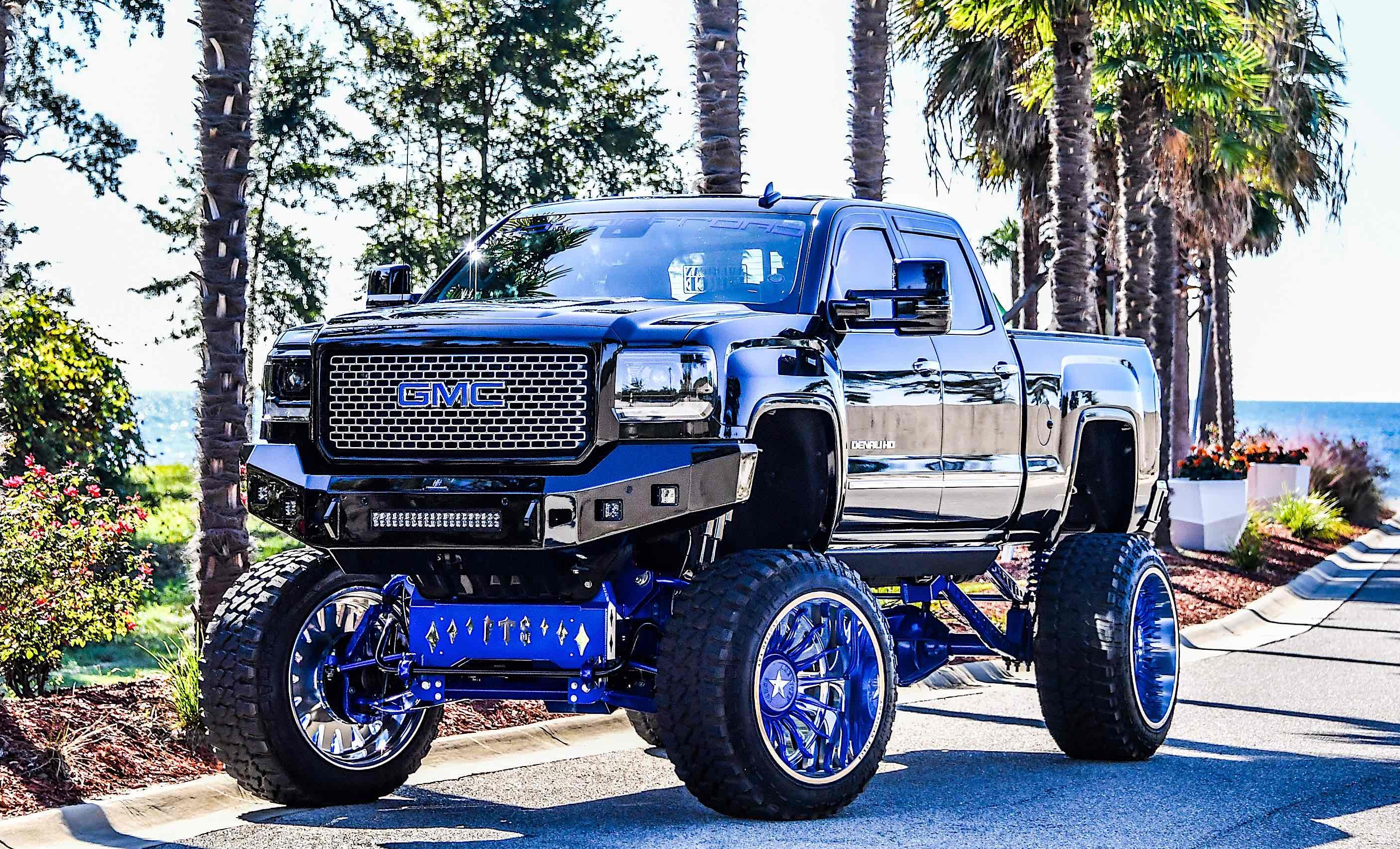
I speak from some short-lived experience in this area. When I was a teenager I briefly fell into a similar clique where I tried to fit in and impress by modifying my first truck with a roll bar, light bar, lift kit, loud stereo, and “glasspack.” (No, not on any planet or in any universe was it the truck pictured above) Needless to say, it did not work for me – in any way. This was primarily because of my extreme geek factor/nerdiness that was of such an outward and obvious magnitude that no amount of expensive modifications to my vehicle, myself, piles of money, or purchased trinkets would have ever made me “cool” and popular with the “in” crowd. At the time I was just trying very hard to fit in – somewhere – anywhere – and I had fallen to peer pressure. Lucky for me, after about 6 weeks my brain won the fight and I grew out of my fitting in phase. The glasspack came off and the stock muffler went back on in favor of the stereo because enjoying my music was far more important to me than the garishly flatulent exhaust noise. I also removed the lift kit as it ruined the truck’s handling and reduced my fuel mileage. I also later sold the roll bar since all it really did was take up space in the bed. Some people grow up, some never do.
Envy
It is also possible, although remote, that many of these folks are just envious and jealous of the awesome Tesla’s and other EV’s and they secretly want one really, really bad – but they could never admit that fact to their fellow pickup truck driving tribe members. To do so would mean ridicule and possibly even exile from their tribe. So to save face they take out their misplaced frustrations in the only way they know how – they block Tesla charging stations and insult the very thing they are secretly in love with and pining away for. It is very much like the jealous little bully in the sandbox breaking the other children’s toys because they are not his.
Don’t be the bully.
Tribalism aka Us vs. Them
Another motive that may drive these individuals to act is simple tribalism. Related and intertwined with the previous motives, tribalism is like the proverbial tick – dug in deeply. Like the tick, they may be so “dug in” to their tribe and their us vs. them outlook on life that nothing will ever be able to tear them out of their ancient tribal tendencies to do a thing. All the others in their tribe are doing that thing so that obviously must mean that thing is the correct and acceptable thing to do – even if all the evidence is against it. You know the type: “My people have always done it this way and I do not believe all the evidence against it so I’m just going to do it anyway!”

Fear of Change.
Also tied to the previously mentioned topics, the fear of change is very powerful and it keeps many from ever progressing. Some of these individuals may do these things out of fear of inevitable change, fear that their comfort zone will be violated. Fear that the comfortable status quo will be disturbed. Fear they will lose their toy trucks to new technology, or maybe fear that “the government” will try to take them away and force them to drive electric cars. The fact is that no one, especially the government – is going to force anyone to drive an electric car – it is more the opposite. The way the system is currently set up favors and promotes the status quo. It promotes vehicles that run on fossil fuels even though all of the available evidence suggests the continued rate we are burning through fossil fuels is harming the very environment we all rely on for our very survival – but that is another story for a different day.
Your Vehicle Is A Tool – Not A Weapon.
A rock, a stick, a knife, a gun, a snowball, a brick, a spoon, a ham bone, a sack of ‘taters, and yes, a car or pickup truck – are only as dangerous and/or potentially harmful as the person controlling them.
Hopefully, if that person has been lucky enough to receive the following;
- good and positive moral training as a child from parents and mentors
- respect and trust of their elders – but not blind trust or blind faith – those are very dangerous
- an unbiased and well-rounded education with a focus on the importance of facts, evidence and critical thinking skills
- quality time outdoors in nature learning how all things are connected and developing a respect for all living things and for the environment that gives us all life
- an understanding of the scientific method and how to use it
- a purposeful separation from lunatic fringe/extremist – hate, religious, and political groups and training in how to recognize them
- training into how to use the internet appropriately in order to take advantage of the powerful research tool that it is, while intentionally avoiding the deep quagmire of dead-ends, lies, filth, misinformation, manufactured FUD (Fear, Uncertainty, and Doubt) and divisive hate that is also the internet
- the appropriate science-backed training in the appropriate use of their chosen tool(s)
- the appropriate licenses and certifications to operate that tool or tools in accordance with the laws set by their state/national governments
- a good dose of common sense
Then hopefully, that person, when they are released into the wild to wield any of the before mentioned tools – including pickup trucks – will use them wisely for the purpose intended and not ever as weapons of hate or malice to be directed at others – even if they do not agree with their driving, energy or life choices.
No matter the motive, the truth of the matter is this: electric trucks (and cars, sport utility vehicles, airplanes, helicopters, motorcycles, buses, boats, bicycles) are here and more are coming fast – and they will eventually replace the majority of fossil burners simply because they are better, faster, safer, stronger, more reliable, less expensive to fuel and maintain, and more convenient than the old smoke spewing, oil leaking, dinosaur juice burners of yesteryear. Yet, even with all those facts we still must deal with human nature, and tribal-focused brains that evolved during the stone age. With human nature and stone age brains, we are forced to contend with all of the above factors which work together to slow the forward march of progress…

Luddites and complacency aside, nobody will ever take your beloved truck (or car) away from you (unless you intentionally break the law for your own personal gain – then you deserve to have your vehicle impounded and your license revoked).
Your favorite old car and truck and all the previously produced petroleum burners will always be around (if you take care of them) and will always be available for you if you want them – just like horses, buggies, and wagons are still available – nobody took them away. These beautiful, classic cars and trucks of yesteryear will always have a place in history and they should as they are a beautiful part of the complex story that brought all of us to this day in time. They are a testament and a tribute to all the inventors, engineers, makers, scientists, doers and adventurers who had an idea for something better, worked hard to make it happen – and then changed the world. Yes, their creations were based upon and relied upon the internal combustion engine and petroleum-based fuels – back then they were the only viable power-plant option. It is a scientifically supported fact that these fossil fuels and the machines they powered have allowed the human species to expand across the globe at an unbelievable pace, light and heat our homes, farms and cities, grow more food to meet the needs of a rapidly growing population, develop better health care, science, and systems that allow us to live longer than ever before, explore the depths of the oceans, and the far reaches of our solar system and even peer into outer space and back into deep time almost back to the “big bang.” In many unique ways, these vehicular creations and these ancient fossil-based fuels may be the very reason – or at least have played a key part – in the very existence of many of us alive today – including the author of this blog post. We all owe an undeniable debt of thanks and gratitude to fossil fuels and to the beautiful vehicles of yesteryear.
However, as with all things, as with all seasons, change is the way of things. Now is the time for change, the time for growth, the time for progress – it is time to stop burning things for fuel to move us around. Like the horse and wagon before them, the majority of these beautiful, earlier modes of transportation worked well for a time, but eventually faded away because something better, faster, stronger, lower maintenance, less stinky and less polluting, was invented – think how fast the Ford Model T displaced the horse – and how the majority of the population quickly accepted the change and adopted it because it was the best option.

Photo source: https://www.icis.com/asian-chemical-connections/2018/12/internal-combustion-engines-car-ownership-to-quickly-head-the-way-of-horses-and-carts/
The transition from internal combustion to electric transportation will be very similar.
Ponderings
Another thing to ponder is this; how long before our gas/diesel burners (if you are still driving one by ~2025) become a wonderful weekend novelty like the horse and wagon/buggy/Ford Model T is today?
How long before they become a cherished piece in a museum collection…or worthless rusting, forgotten hulks covered in weeds in backyards?

How long before ICE drivers are treated the same way litterbugs (and smokers) are often treated today and end up catching all sorts of flack from those around them every time they drive their old fossil burner because everyone around them is aware, accepts, and understands that toxic emissions from driving fossil fuel powered vehicles harm all life forms and nature – the very life support system that gives all of us life?
A great article on the coming EV and renewable revolution. Here’s the direct link: https://cleantechnica.com/2019/06/22/electric-vehicles-renewables-the-changing-world-dynamic/
Before some of you start ranting in the comment section about how much pollution is emitted from building/charging/driving EV’s – watch the below video for the facts:
More sources: https://blog.ucsusa.org/dave-reichmuth/new-numbers-are-in-and-evs-are-cleaner-than-ever
and
How many years will it be before insurance companies start raising their rates on older vehicles because those older vehicles lack any modern autonomous safety features – such as automatic emergency braking, back up cameras, “Autopilot” and “Sentry Mode” – features that make newer vehicles so much safer to drive for the driver and for everyone else on the roads – thereby making older vehicles a dangerous liability to drive – for the driver and others around them – which therefore means it is now much more expensive to insure and to drive the older cars?
If you do not believe autonomous “autopilot” safety features will become popular on vehicles or if you do not trust them – think again and watch this amazing video of the evidence.
And yet another one…
Video source: https://electrek.co/2019/02/05/tesla-owner-autopilot-saves-life-swerving/
Insurance companies are starting to offer discounts for autonomous features on vehicles: https://futurism.com/insurance-companies-offering-discounts-tesla-drive-itself
A very smart and enlightening commentary from Answers with Joe on the automotive autonomy/EV revolution:
When will ICE vehicles become stranded assets we are unable to sell because nobody wants them anymore because their fuel source, maintenance, and insurance costs have become so incredibly expensive?
When will our beloved, classic old gas burners be converted to electric drive and achieve a second life as an electrified classic…


Read this great story about a 1963 VW bug that was converted to fully electric by Zelectric Motors
Or follow the link to the story here: https://jalopnik.com/the-electric-converted-1963-zelectric-vw-beetle-is-a-514043175
When will ICE powered vehicles become as obsolete as the slide rule, the film camera, the 8 track, VHS, and cassette tapes, Blockbuster video, Kodak, phone booths, CRT computer monitors and console TV’s…in other words – when will they go the way of the dinosaurs that power them?
A recent article by Zachary Shahan of Clean Technica predicts that the EV disruption has already started and the major disruption will begin very soon. A great comparison between the EV and other disruptive technologies can be seen in this chart.

It will not be long dear reader, it will not be very long….

…this is not a question of if, it is a question of when.
More evidence of the EV revolution that is upon us: https://cleantechnica.com/2019/02/03/hints-of-ev-revolution-rising/?fbclid=IwAR2r9YZ7Mo9Yhh3RwoivSF1VzCE4x7EjCoMUlGw3_fXcANXoZNEYxRvSpiU
…more powerful evidence: https://seekingalpha.com/article/4225153-evs-oil-ice-impact-2023-beyond
…and even more evidence: https://www.npr.org/2019/02/16/694303169/as-more-electric-cars-arrive-whats-the-future-for-gas-powered-engines?fbclid=IwAR2V6ePb1qnq8a9VSuWwbLYqEUFfa3xWXkc3PpVEKBWAYA5Zu6crVxh0kdE
…and even more electrifying evidence: https://cleantechnica.com/2018/10/27/us-electric-car-range-will-average-275-miles-by-2022-400-miles-by-2028-new-research-part-1/
…and yet even more: https://insideevs.com/electric-ford-mustang-crossover-go-like-hell/?fbclid=IwAR0w9McYNEScnKfTgVHaK9oMo7YcQlyO-Gdx2jO1FpcfYNYBGv_OkNmsFLM

A great example of the fast-growing trend in vehicle electrification is the simple fact that many young, forward-thinking companies (and even the legacy auto-makers) are working hard to bring more than capable fully electric and hybrid-electric cars and now trucks and 4×4’s to market including but not limited to…
Bollinger Motors

Rivian

Atlis

Tesla
Little is known about the upcoming Tesla Pickup…but they are working on something big….is this a teaser image of what it may be?

…only time and Tesla and some interesting tweets from Elon may tell.
FORD
That’s right, Ford has confirmed that is will offer fully electric and hybrid versions of the F-150 for the 2020-21 model years. Below is a concept of what it may look like.

Source: https://www.caranddriver.com/news/a25933730/ford-f-150-electric-pickup-truck-confirmed/
As I wrap up I discover that GM is considering electrifying its trucks as well…looks like the days of the dirty ICE powered pick-up trucks blocking charging stations may soon be a thing of the past.
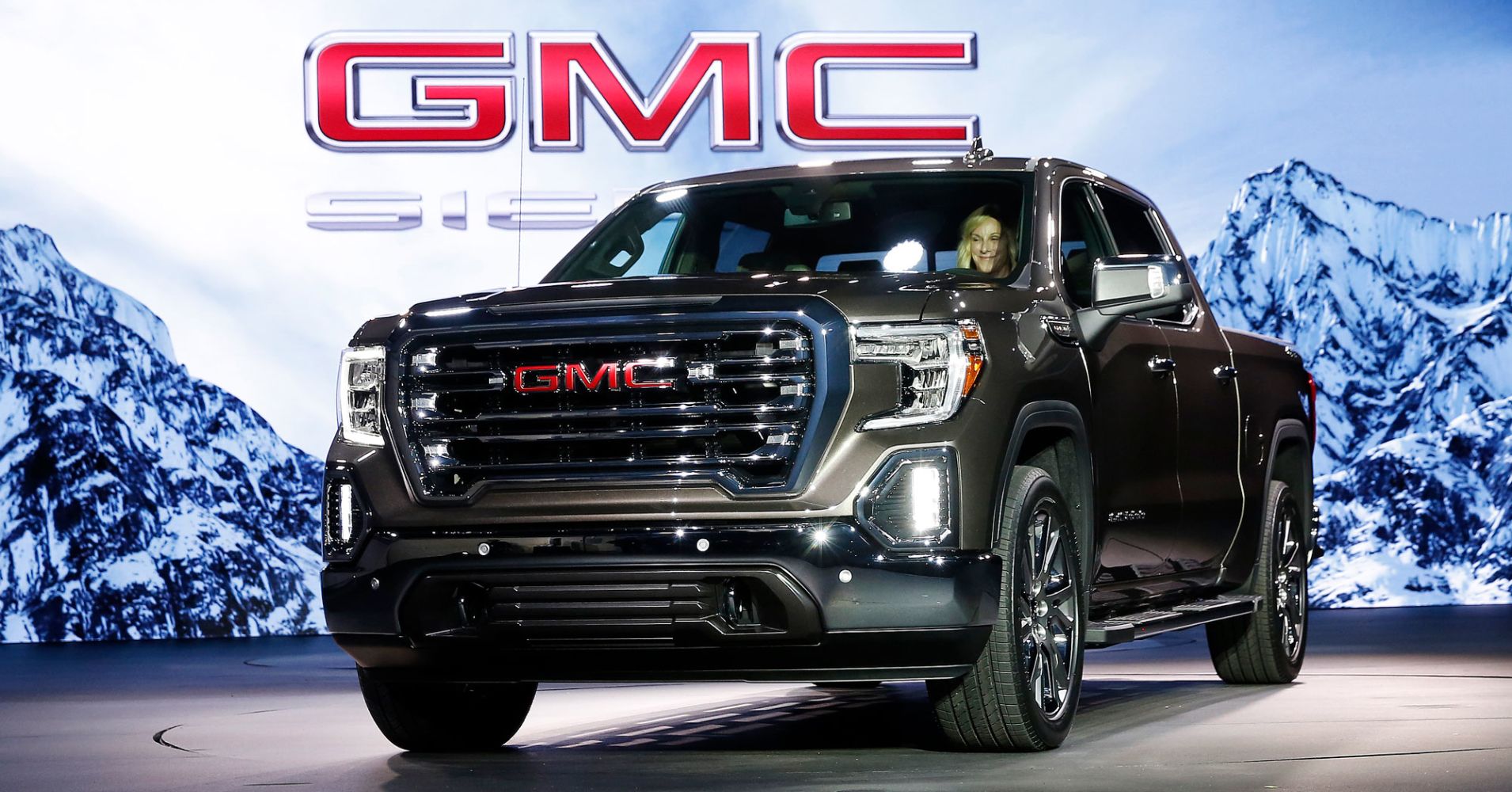
and
Even more possibilities: https://cleantechnica.com/2019/02/12/scoop-gm-working-on-electric-pickup-truck-with-tesla-powertrain/?fbclid=IwAR3WA20t4MHHcnZaII9kgVIESAco599xmqHNOUeuGYwsMDR29bJgAE52TiQ
More Ponderings
Erroneously enough, it seems that some of these EVSE blocking folk may be committing these acts as some form of misguided political statement. There is some anecdotal evidence suggesting some of these individuals may feel that owning Tesla and other electric vehicles are somehow anti-American. If this is true, then it is obvious – these people have not done the simple online research revealing Tesla as an American car company. Tesla’s vehicle and battery factories, parts suppliers, shops, and service facilities create a manufacturing, delivery, and customer care chain employing tens of thousands of hard-working Americans in hundreds of cities, towns, communities, and truckers on the roads (soon to be driving Tesla electric Semi trucks.)
You may also be surprised to learn that Tesla now rates as the
MOST AMERICAN car company.
Furthermore, all of Tesla’s cars (in this country) and all other EV’s in this country – run on American generated electricity produced on our soil by Americans operating American power generating facilities.
Many EV drivers, including this blogger, charge their EV’s at home/work with “homegrown” renewable energy sources such as rooftop solar arrays thereby making them 100% energy secure and practically free to drive. Read my last post about how I power my EV with solar produced electricity and came to the conclusion that my EV (a 2012 Nissan Leaf) costs me only one cent/mile to power and drive!

In other words – any electric vehicle used in this country – no matter it’s manufacturer – is charged by electricity produced from fuels primarily sourced within this country by hard working Americans operating American power plants.
The same cannot be said of fossil fuel powered vehicles whose fuels of choice were – as of 2017 – around 19% sourced from foreign lands* at great cost to our countries safety, security, and future.
*Source: https://www.eia.gov/tools/faqs/faq.php?id=32&t=6
All that evidence suggests that driving a Tesla, or any EV (factory, converted classic, or home built unit) powered by electrical energy sourced in the USA, would be a great act of patriotism that would only support the energy security/self-sufficiency goals of our country. More on this here: https://cleantechnica.com/2017/05/31/national-security-bulldogs-electric-cars/

Meanwhile
The bullying bozos blatantly blocking Battery-Electric Vehicle charging stations and rolling coal on EV’s and innocent pedestrians with their garishly modified vehicular dinosaurs while attempting to make some sort of macho, tribal, hateful, nationalistic, political, and/or anti-environmental statement against “anti-American electric cars” – are powering their toy trucks on fuels that a percentage of has been procured in faraway lands with governments and policies often hostile toward our way of life.

Seems like someone did not do their research.
On top of all this madness – just keeping the fuel flowing into the tanks of their stinky little trucks (and all of our fossil fuel powered vehicles and systems for that matter) has required decades of war*. It has required the sacrifice and the deaths of tens of thousands of our brave and beloved children, brothers, sisters, fathers, mothers, and lovers who were and are often fighting to protect oil rights and resources to keep your (and my) fuel tanks topped off with petroleum-based fuels because, for the last 100 years there has been no other option – but that is about to change.

*Sources: http://priceofoil.org/thepriceofoil/war-terror/ *https://en.wikipedia.org/wiki/Oil_war *https://energypost.eu/twenty-first-century-energy-wars-oil-gas-fuelling-global-conflicts/
While I will always 100% support our brave servicemen and women in the military, and all of my friends and family members who are serving and have honorably served – and some who have paid the ultimate price – I am not at all OK with, and will never support sacrificing my loved ones and friends lives just to protect the flow of oil so I can think I am free when in fact I, and all of us, remain addicted to the fossil fuel machine.

IMHO – to be truly free one must be as self-sufficient as possible. If we are relying on imported energy sources while sacrificing our loved ones to acquire and protect that energy – we are not self-sufficient and we will never be truly free.
To be truly self-sufficient and truly free, our country needs to work toward the ultimate goal of sourcing all of our energy needs from our home soil.
Being self-sufficient also means to respect and care for that which gives you life. To me, this means using energy resources that do as little harm as possible to the very environment that provides all of us with all of our survival needs. To me, this means we need to focus on developing the amazing untapped potential of ALL available renewable energy sources available to us and keep fossil fuels as a strategic reserve and a backup power source for the lean times. If the USA continues burning through almost 20 million barrels of petroleum per day not only will we quickly exhaust these finite fossil fuels and be forced to scramble to get renewable energy sources online and operational while millions suffer, but we will also speed up the destruction of our health and shared environment with fossil fuel pollution speeding up atmospheric pollution, planetary warming, and weather weirding due to anthropogenic climate change.
Common sense and scientific evidence say that now is the time to start making a system-wide switch to renewable energy sources.
We need to move toward 100% renewable energy now.
We know what we need to do.
We have the technology.
We have science on our side.
But do we have the personal and political will power to do it?

Sadly, to keep the costs at the pumps down so the fossil fuel addiction can continue to flow to consumers unabated, and to keep EV and domestically produced renewable energy adoption low – the fossil fuel supported powers and bribed politicians in government keep funneling our hard earned money into supporting the fossil fuel producers and pushers with massive subsidies to the tune of tens of billions of our tax dollars annually*! The massively powerful and insanely wealthy fossil fuel machine, working with uncaring, bribed politicians and policymakers on both sides of the political fence, are funneling loads of money into organizations that work to manufacture loads of FUD – Fear, Uncertainty, and Doubt – in the peer-reviewed scientific evidence presented to us by the vast majority of the planet’s climate and environmental scientists. Evidence that has collectively revealed that we humans are changing the climate, the natural processes, and the stability of our atmosphere – thereby bringing about anthropogenic climate change and the sixth mass extinction of life on planet earth – and we just sit back and let this happen.
Why?
What is wrong with us?

*Sources: https://www.vox.com/energy-and-environment/2017/10/6/16428458/us-energy-coal-oil-subsidies and http://priceofoil.org/2017/10/03/dirty-energy-dominance-us-subsidies/ and http://priceofoil.org/fossil-fuel-industy-influence-in-the-u-s/
Furthermore, the acquisition, shipment, refining, distribution, and use of petroleum-based fuels has resulted in countless oil, gas, and fuel leaks, spills and other accidents that have created massive impacts to our shared environmental life support system, loss of human life and wildlife, loss of health and livelihoods for countless people and families, oh and those nagging and worsening air pollution and climate change issues…just to keep the oil and gas flowing to feed the status quo so the cash can continue to flow into the deep bank accounts of the filthy mega-rich oil barons and corrupt politicians who are working together to enrichen themselves while destroying our shared futures.

All this madness trickles down and the lunatic fringe – in petroleum production, government, and those in their charging station bocking little toy trucks – who remain free to target and assault those of us working to make good and lasting changes in the world by adopting and promoting the following;
- promoting and using “homegrown” renewable energy
- promoting domestic energy security through the adoption of domestic renewable energy resources
- teaching preparedness and self-reliance through the scientific method
- accepting science supported evidence and expert guided change
- driving a much more energy secure, less polluting, lower maintenance, cheaper to drive, electric vehicle built in the USA and powered by American electrons.

Conclusion
The problem with the small number of fringe-dwelling, macho-driven, small-minded individuals that choose to intentionally block and vandalize charging stations, insult EV drivers for childish, thoughtless “reasons,” (and roll coal) is that they do not think – they just act on their primal, fear-driven, toxically tribal emotions without any actual evidence based facts or reason to back up their childish actions.
I could go on but I believe you now know what I think about this issue.
In closing – I have offered examples and explained
ad nauseum the many reasons why the thoughtless practice of intentionally ICEing/blocking/vandalizing Tesla and other EV charging stations is ill-advised. However – while I may have explained it, I cannot understand it for you. That challenge is up to you and I hope you have the intellect and the common sense to do so…and to never intentionally block access to another person’s fuel source.
Knowledge is power.
Knowledge conquers fear.
Get some knowledge.
Be the change you wish to see in the world.

































































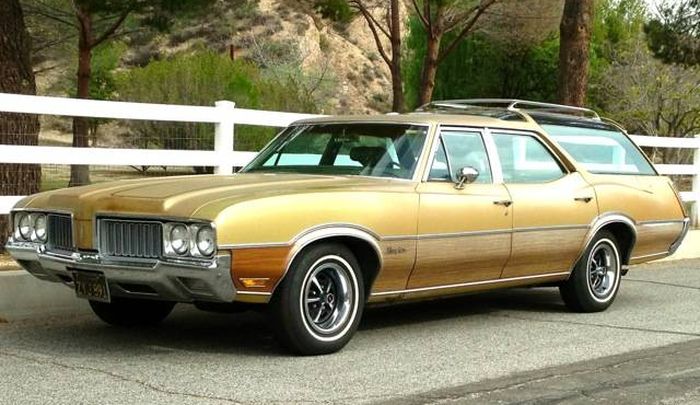

 The 2010 BP Deepwater Horizon incident
The 2010 BP Deepwater Horizon incident 




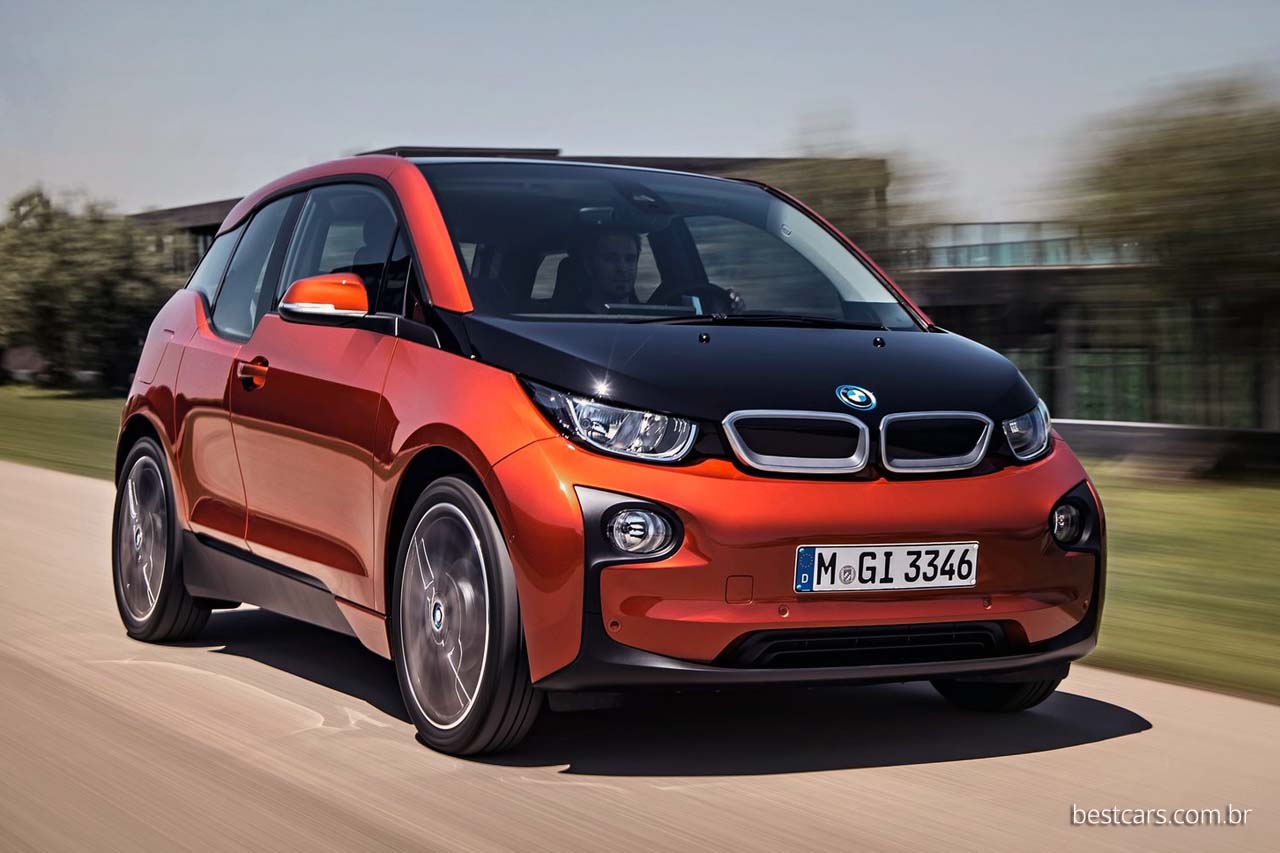


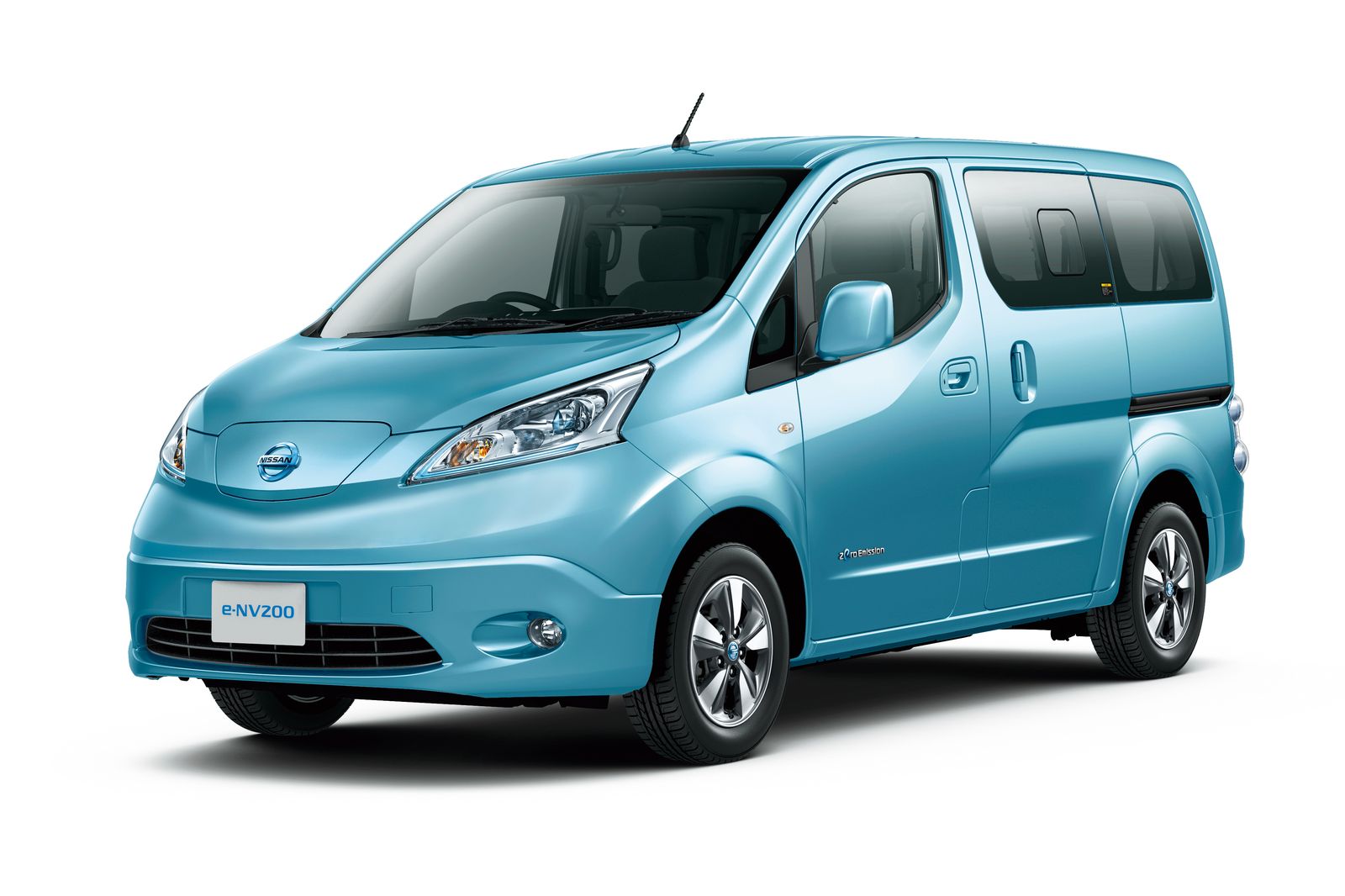


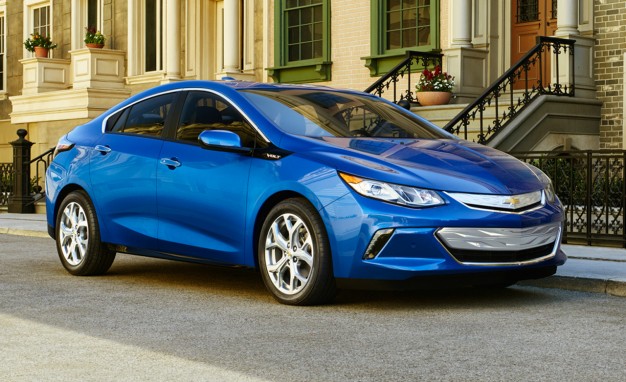
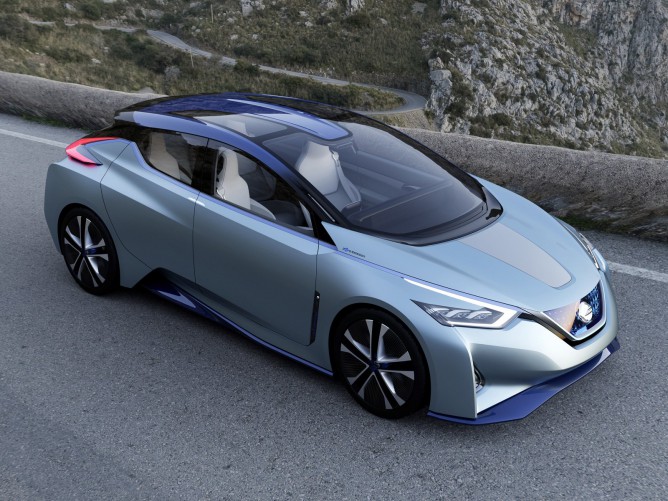

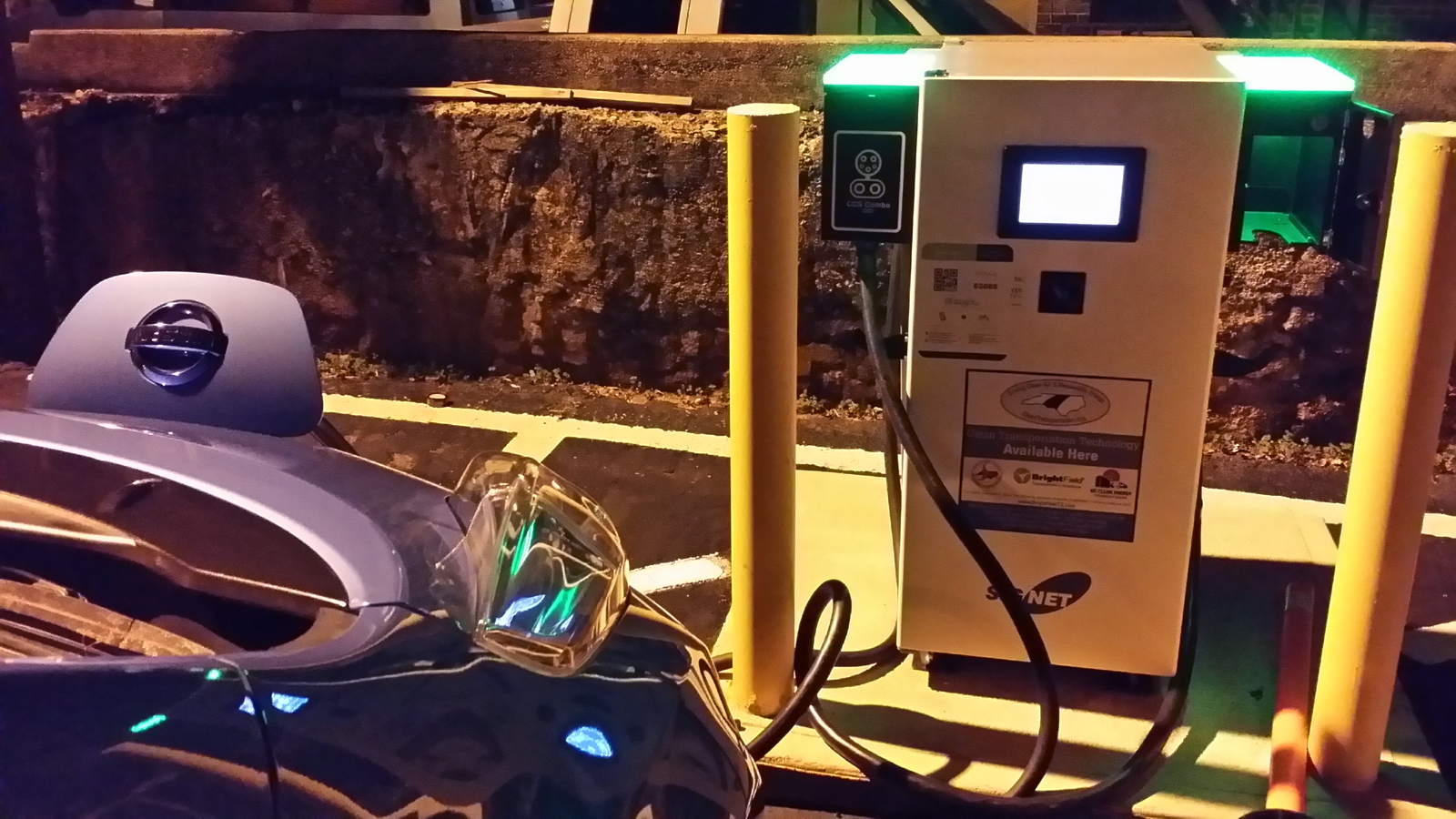
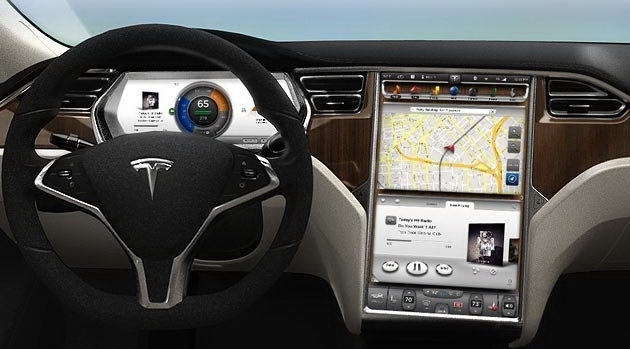
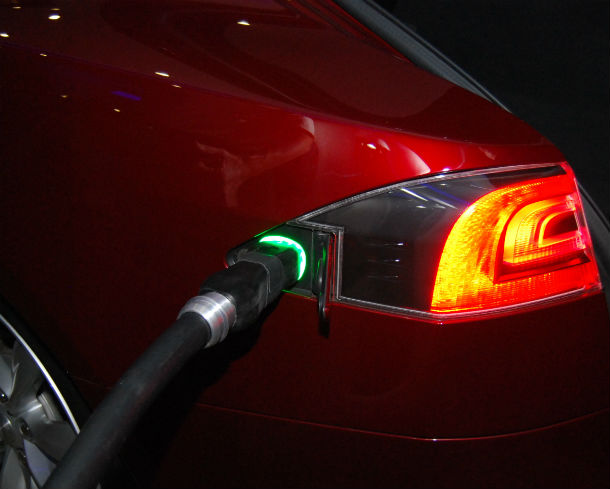








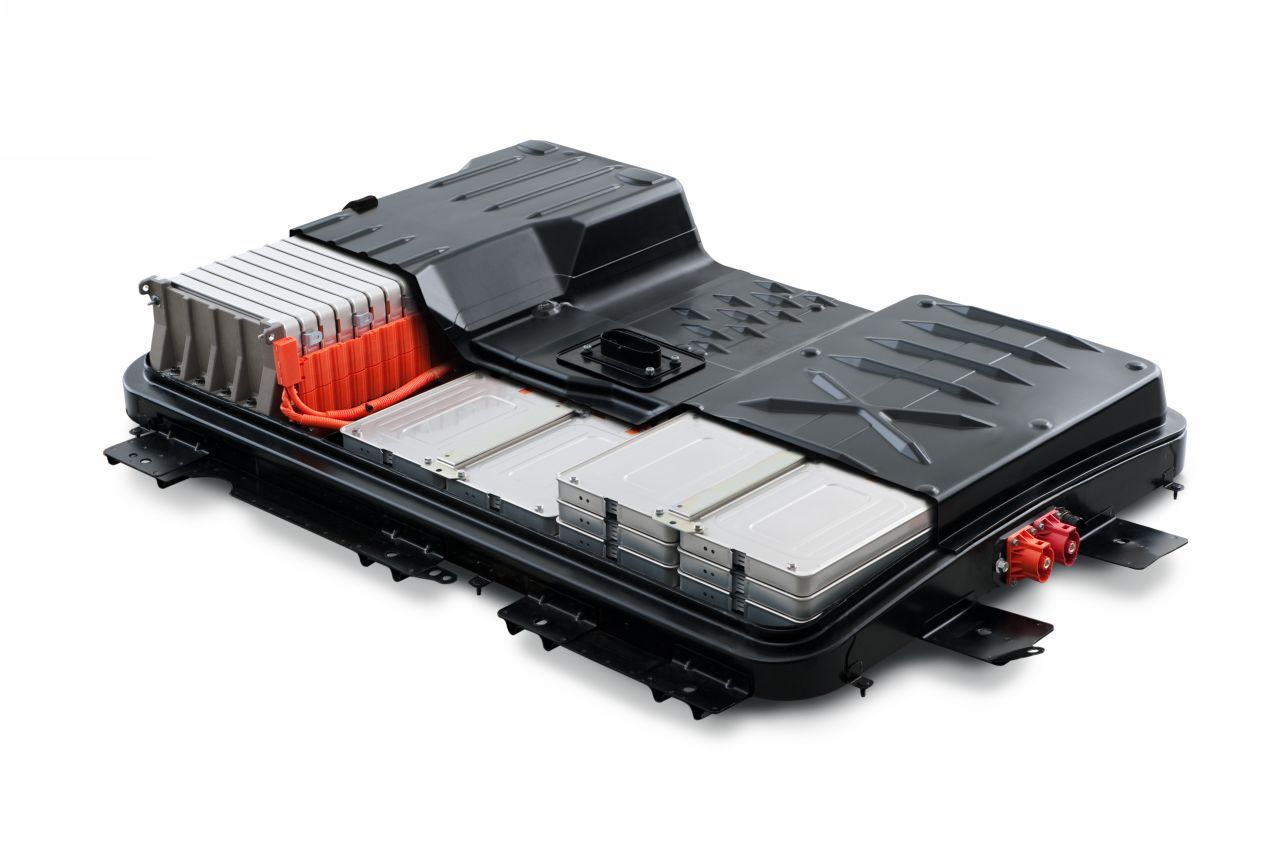
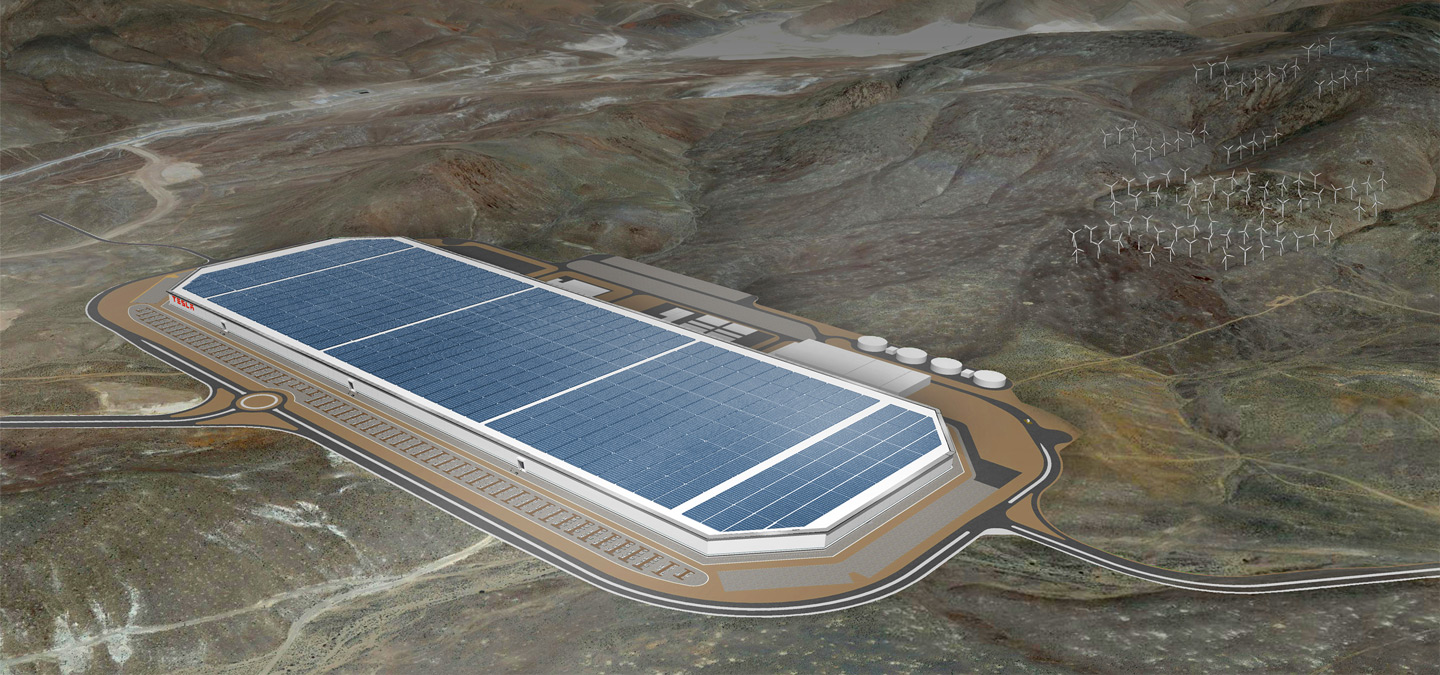


 Plugged into a fast charger
Plugged into a fast charger







